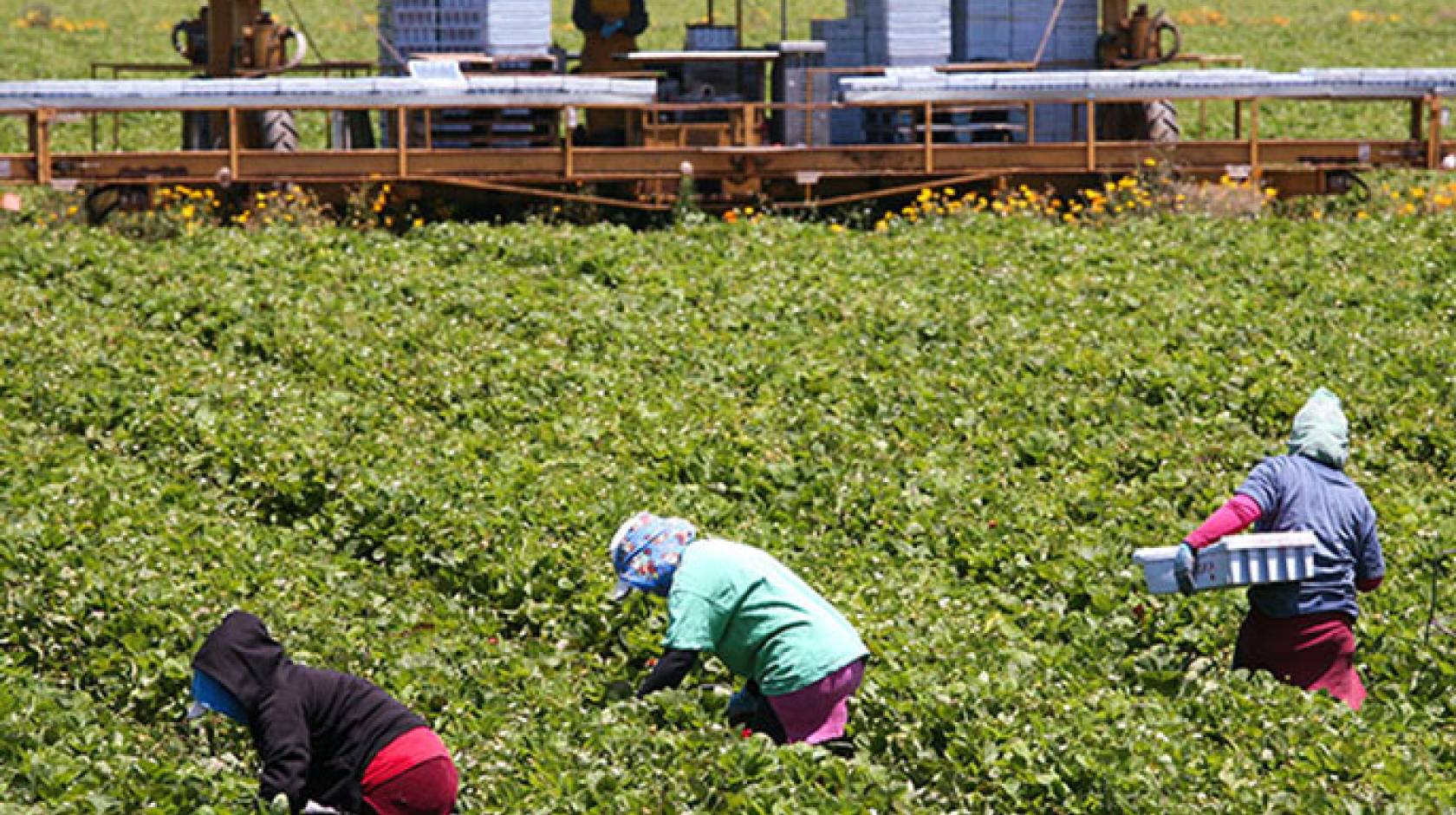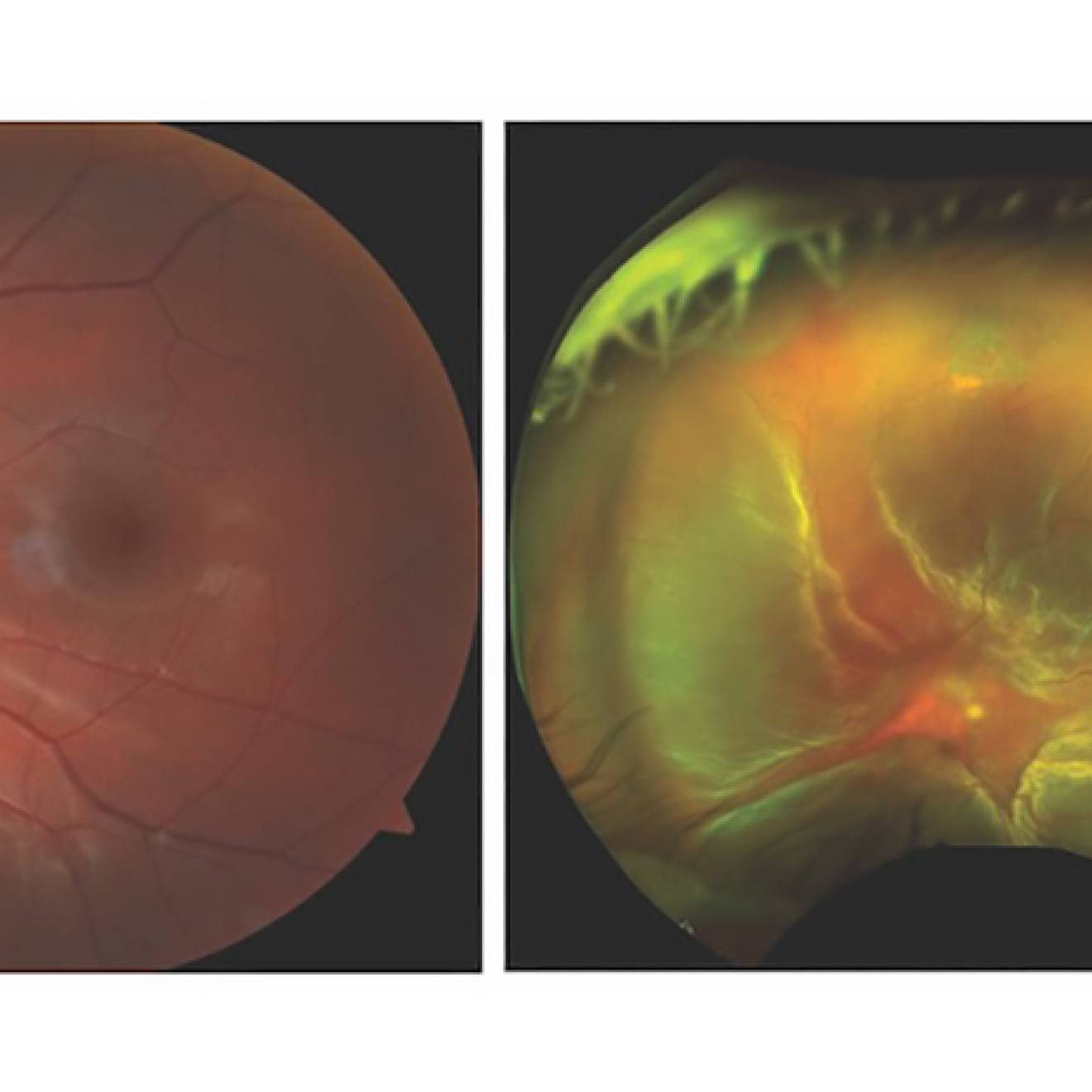Kara Manke, UC Berkeley

Many farmworkers who plant and harvest our food are forced to live and work under conditions that are ripe for transmission of COVID-19. During the summer harvest season, coronavirus outbreaks popped up across the nation among farmworkers in agricultural communities, including many in California.
In a white paper published online Wednesday, Dec. 2), public health researchers at the University of California, Berkeley, detail preliminary findings from the first long-term study on the prevalence of, and the risk factors for, COVID-19 infection among California’s agricultural laborers.
The paper reports that between mid-July and November 2020, 13% of the 1,091 Salinas Valley farmworkers enrolled in the study tested positive for SARS-CoV-2, the virus that causes COVID-19. In California as a whole, only 5% of the population has tested positive between the beginning of the pandemic and late November.
By the end of October, roughly 20% of farmworkers recruited for the study tested positive for antibodies to COVID-19, indicating prior infection. These figures are far higher than estimates of approximately 1% in the San Francisco Bay Area population at large from studies led by the Centers for Disease Control and by other UC Berkeley researchers during the spring and summer.
“These findings validate concerns from researchers, public health professionals and community advocates that farmworkers would suffer from the COVID-19 pandemic in California,” said Joseph Lewnard, assistant professor of epidemiology at UC Berkeley and a member of the study team. “We have failed to protect this population, while they have continued to engage in essential work through the pandemic.”
To conduct the study, UC Berkeley researchers partnered with the Clinica de Salud del Valle De Salinas (CSVS) to recruit and test study participants. The CSVS is the main clinic network serving farmworkers and their families in Monterey County and has conducted testing throughout the pandemic, both at its clinics and through community outreach.
“Our study is an attempt to find answers about incidence and prevalence of this viral infection in the Hispanic farmworker community,” said Dr. Maximiliano Cuevas, CSVS chief executive officer. “Understanding the level of disease present in our community, and understanding how it spreads among these ‘essential workers,’ will provide guidance for developing policies that can be used to quickly reduce and reverse the spread of disease and ultimately protect our vital food supply for our nation.”
The research was a new collaboration within the UC Berkeley School of Public Health: Brenda Eskenazi, Professor of the Graduate School, and Ana Maria Mora, a researcher in the Center for Environmental Research and Children’s Health, have led longstanding studies of farmworkers in Salinas Valley and elsewhere in the world. Lewnard has focused on respiratory and vaccine-preventable infections, and Eva Harris, a professor in the Division of Infectious Diseases and Vaccinology, leads serological studies of viruses, such as dengue and Zika.
COVID-19 in ‘America’s Salad Bowl’
California’s Salinas Valley, known as “America’s Salad Bowl,” is home to more than 50,000 farmworkers, many of whom are Mexican immigrants and undocumented. Low wages and food insecurity make many fearful of missing work when they are sick, and fear of deportation may also deter them from seeking health care. The community also faces higher rates of medical conditions like obesity, hypertension and diabetes that can make COVID-19 infections worse.
In early April, Eskenazi rapidly helped to organize a coalition of growers, county officials, farmworker advocates, doctors and scientists to protect farmworker health. The coalition, the Monterey County Coalition of Agriculture, quickly helped to set COVID-19 safety guidelines for growers, distributed hundreds of thousands of face masks to workers and secured emergency housing for farmworkers needing to quarantine.
But, as epidemiologists, the study team members also wanted hard data to help guide the coalition’s efforts.
“We need numbers,” Eskenazi said. “And we don’t just need the positivity rate. We also need to know things like: What proportion of the community is living in crowded conditions? And is that related to having COVID-19? Or, what personal protective equipment is being provided to the farmworkers? And should they be provided more?”
Study participants include farmworkers who came to the CSVS clinic for testing, as well as those recruited through community outreach. A total of 140, or 13%, tested positive for COVID-19 using polymerase chain reaction (PCR) testing. The positivity rate was 28% for symptomatic individuals and 8% for asymptomatic individuals.
Alarmingly, more than half or 58%, of individuals who were both symptomatic and infected said that they continued to go to work while sick.
“A big problem is that farmworkers were going to work symptomatic because they thought they’d lose their jobs, and they felt they needed to feed their families,” Eskenazi said. “A large portion of the farmworkers are food insecure, meaning they are going hungry during this pandemic, and these are the people that put food on our table.”
Most farmworkers who become sick with COVID-19 are entitled to replacement income and emergency housing, where they can safely quarantine. However, some farmworkers also reported not receiving information about these resources from employers. And while a Monterey County Agricultural Advisory encourages growers to screen employees for symptoms, many study participants indicated that their employers did not have any such screening in place.
“It seems that employers are providing a lot of information about COVID-19 and are providing face coverings to farmworkers who don’t have them,” Mora said. “But while the guidelines recommend that they perform temperature checks and ask for symptoms when people arrive to work, most employers are not doing that.”
Language barriers may also have prevented many farmworkers from taking advantage of these resources. Those who tested positive are more likely to speak Indigenous languages, rather than Spanish or English.
“I think we need a very strong media messaging campaign in multiple languages that reaches different groups within the farmworker community,” Mora said. “This campaign would have to include not only the resources available if you are infected, but also who can help you access those resources. For instance, it seems that the paperwork required to get replacement income is a headache. So, who can help you deal with that if you have a low level of education, or you don’t have time?”
While the work of the growers and public health officials has gone a long way toward helping farmworkers weather the COVID-19 crisis, Eskenazi stresses the need for continued social and epidemiological interventions in these communities.
“We need rapid testing that gives immediate results, plus rapid contact tracing by people who are connected to and trusted by the farmworkers,” Eskenazi said. “We also need to provide immediate wraparound care, to let people know their benefits and to make sure that we help them get replacement income right away, because many are living paycheck to paycheck. As vaccination becomes available, it is imperative that we prioritize these farmworkers to safeguard their health and to secure our food supply.”
The research team finished enrolling participants in the Salinas Valley at the end of November and hopes to expand the study to other agricultural regions of California.
The study was funded by the Innovative Genomics Institute at UC Berkeley and Clinica de Salud del Valle de Salinas.

